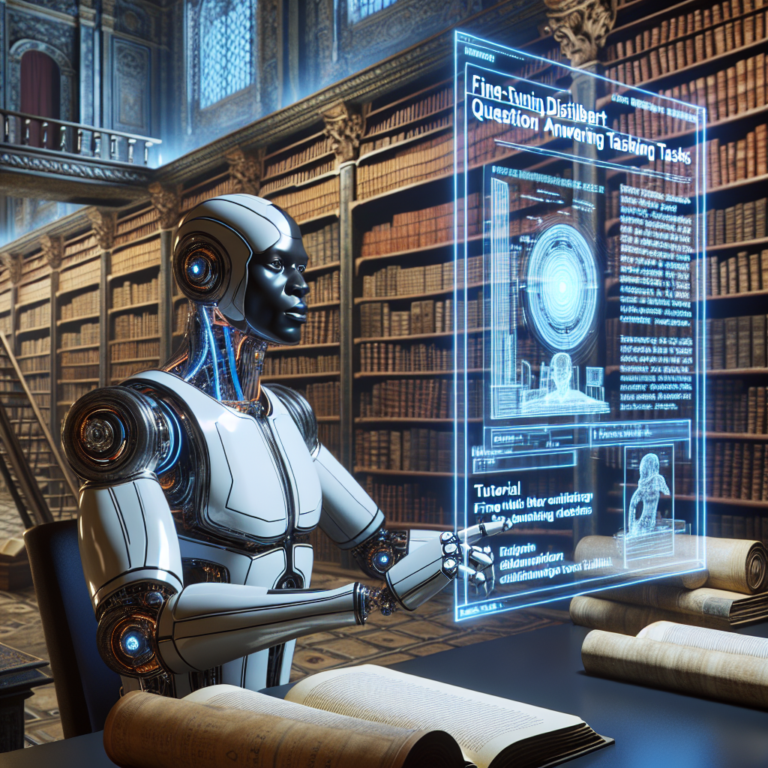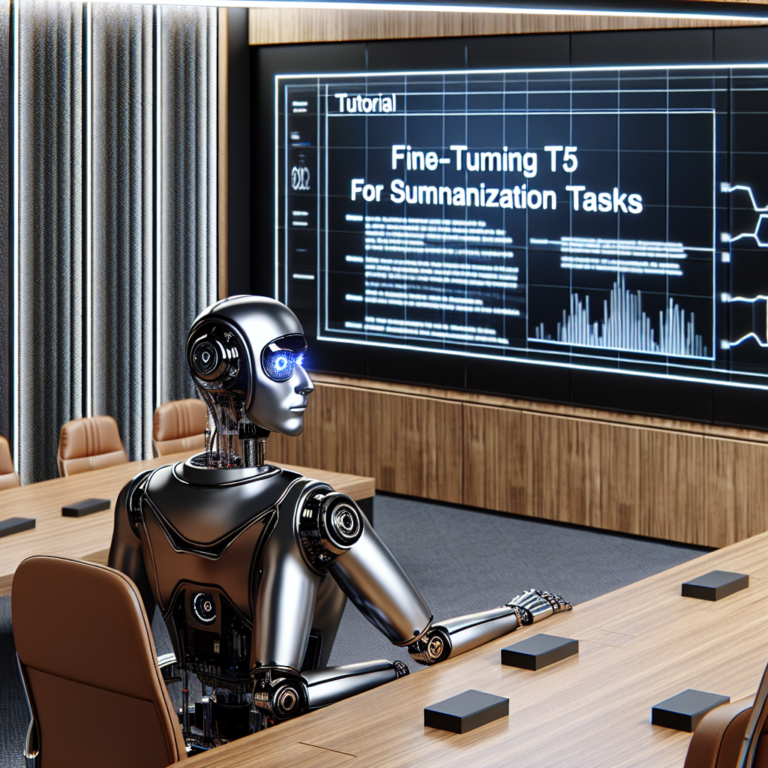1. Understanding Transformers in Machine Translation
Understanding Transformers in Machine Translation
Transformers have revolutionized the field of machine translation with their unique architecture and capabilities. Understanding their mechanism is key to leveraging their full potential in translation tasks.
Architecture Overview: Transformers utilize a model architecture based on self-attention mechanisms that weigh the importance of different words, irrespective of their positions in the sentence. This allows for more contextually aware translations.
Training Process: Unlike traditional models that process data sequentially, transformers process entire sequences of data at once. This parallel processing capability significantly speeds up training and improves the efficiency of model learning.
Advantages in Translation: The ability of transformers to handle long-range dependencies makes them exceptionally good at understanding context, which is crucial for accurate translations. Their architecture also supports the inclusion of additional layers, enhancing their ability to learn complex linguistic patterns.
# Example of setting up a transformer model for translation
from transformers import AutoModelForSeq2SeqLM, AutoTokenizer
model_name = "t5-base"
tokenizer = AutoTokenizer.from_pretrained(model_name)
model = AutoModelForSeq2SeqLM.from_pretrained(model_name)
sample_text = "This is a sample text for translation."
inputs = tokenizer.encode("translate English to French: " + sample_text, return_tensors="pt")
outputs = model.generate(inputs, max_length=40, num_beams=4, early_stopping=True)
translation = tokenizer.decode(outputs[0], skip_special_tokens=True)
print(translation)
Challenges: Despite their strengths, transformers require substantial computational resources, particularly for training on large datasets. They also need fine-tuning to adapt to specific languages or dialects effectively.
By understanding these key aspects of transformers, you can better prepare to fine-tune them for your specific translation needs, ensuring both high accuracy and efficiency.
2. Preparing Your Dataset for Fine-Tuning
Preparing Your Dataset for Fine-Tuning
Before you can begin fine-tuning your transformer models for translation tasks, the preparation of your dataset is crucial. This step ensures that the training phase is both effective and efficient.
Selection of Data: Start by gathering a comprehensive dataset that includes varied linguistic structures and vocabularies. This diversity helps the model learn the nuances of language translation.
Cleaning the Data: Clean your dataset to remove any inconsistencies or errors. This includes correcting typos, standardizing formatting, and removing any irrelevant information that might confuse the model during training.
Splitting the Data: Divide your dataset into three parts: training, validation, and testing. This separation helps in tuning the model’s parameters during training, validating its performance during the process, and finally testing it to evaluate its translation capabilities.
Tokenization: Apply tokenization to convert text data into a format that’s manageable for the model. This involves breaking down phrases into smaller units, or tokens, which can be processed by the transformer.
# Example of tokenization using Python
from transformers import BertTokenizer
tokenizer = BertTokenizer.from_pretrained('bert-base-multilingual-cased')
sample_text = "Example text for tokenization."
tokens = tokenizer.tokenize(sample_text)
print(tokens)
Augmentation: Consider augmenting your dataset to enhance its size and variability. Techniques like back-translation or synonym replacement can be effective in creating a robust dataset for training.
By meticulously preparing your dataset, you set a strong foundation for the fine-tuning process, which is pivotal in achieving high-quality translation outputs from your transformer models.
3. Setting Up the Fine-Tuning Environment
Setting Up the Fine-Tuning Environment
Establishing the right environment for fine-tuning transformers is critical to the success of your translation models. This section will guide you through the essential steps.
Choosing the Right Hardware: Opt for hardware that can handle the computational demands of transformer models. GPUs are preferred due to their ability to process large datasets quickly.
Setting Up the Software: Install necessary libraries and frameworks such as TensorFlow or PyTorch. Ensure they are compatible with your hardware for optimal performance.
# Example of setting up PyTorch
import torch
print("PyTorch version:", torch.__version__)
torch.cuda.is_available() # Check if GPU support is enabled
Configuring the Development Environment: Use tools like Docker or virtual environments to isolate your development space. This helps in managing dependencies without affecting other projects.
Preparing the Model: Load a pre-trained transformer model from a library like Hugging Face’s Transformers. This model will serve as the starting point for fine-tuning.
# Example of loading a pre-trained model
from transformers import BertModel
model = BertModel.from_pretrained('bert-base-multilingual-cased')
Hyperparameter Tuning: Adjust hyperparameters such as learning rate, batch size, and number of epochs. These settings can significantly impact the effectiveness of your fine-tuning.
By carefully setting up your fine-tuning environment, you create a robust foundation that supports the advanced capabilities of transformer models, leading to more accurate and efficient translation tasks.
4. Strategies for Effective Fine-Tuning
Strategies for Effective Fine-Tuning
Effective fine-tuning of transformer models for translation involves several strategic approaches that enhance the model’s learning and performance.
Incremental Learning: Start with small adjustments to the model’s weights. This gradual approach helps prevent overfitting and allows the model to adapt to the nuances of the target language.
Data-Centric Strategies: Focus on the quality and variety of your training data. More diverse data leads to a model that can handle a wider range of translation scenarios.
Regularization Techniques: Implement techniques such as dropout or L2 regularization to reduce the risk of overfitting. These methods help in maintaining the model’s generalization ability.
# Example of applying dropout in PyTorch import torch.nn as nn dropout_layer = nn.Dropout(p=0.1) # 10% probability to drop units
Learning Rate Scheduling: Adjust the learning rate dynamically based on training progress. A decaying learning rate can lead to better fine-tuning outcomes as it allows finer adjustments in later stages.
# Example of learning rate scheduling in PyTorch from torch.optim.lr_scheduler import StepLR optimizer = torch.optim.Adam(model.parameters(), lr=0.001) scheduler = StepLR(optimizer, step_size=1, gamma=0.95)
Early Stopping: Monitor the validation loss during training and stop the training process if the loss stops decreasing. This prevents wasting computational resources and overfitting.
By employing these strategies, you can significantly enhance the effectiveness of your fine-tuning process, leading to more accurate and reliable translation models.
5. Evaluating Translation Model Performance
Evaluating Translation Model Performance
Evaluating the performance of your fine-tuned transformer models is crucial to understanding their effectiveness in real-world translation tasks.
Accuracy Metrics: Utilize metrics like BLEU (Bilingual Evaluation Understudy), which measures how close the machine’s output is to a human translator’s output.
# Example of calculating BLEU score
from nltk.translate.bleu_score import sentence_bleu
reference = [['this', 'is', 'a', 'test']]
candidate = ['this', 'is', 'a', 'test']
score = sentence_bleu(reference, candidate)
print("BLEU score:", score)
Quality and Fluency: Assess the translation’s quality and fluency by conducting qualitative reviews. This involves human evaluators comparing the translated text against the source.
Speed and Efficiency: Measure how quickly the model processes input and generates output. This is vital for applications requiring real-time translation.
Scalability: Test the model’s performance across different languages and datasets to evaluate its scalability and adaptability to various linguistic challenges.
By thoroughly evaluating these aspects, you can gauge the practical utility of your translation models, ensuring they meet the desired standards of accuracy and efficiency.
6. Advanced Techniques in Transformer Fine-Tuning
Advanced Techniques in Transformer Fine-Tuning
Delving deeper into transformer fine-tuning, several advanced techniques can significantly enhance model performance for translation tasks.
Hyperparameter Optimization: Experimenting with different sets of hyperparameters, such as batch size, learning rate, and number of layers, can optimize the training process. Tools like Bayesian optimization can automate this search efficiently.
# Example of using Bayesian optimization for hyperparameter tuning
from bayes_opt import BayesianOptimization
def train_model(learning_rate, batch_size):
# Model training logic here
return model_accuracy
optimizer = BayesianOptimization(
f=train_model,
pbounds={'learning_rate': (0.01, 0.1), 'batch_size': (1, 10)},
random_state=1,
)
optimizer.maximize(init_points=2, n_iter=3)
Transfer Learning: Leveraging pre-trained models and adapting them to specific translation tasks can save training time and improve performance, especially with limited data.
Attention Mechanisms: Enhancing the model’s attention mechanisms, such as using multi-head or self-attention, allows the model to better focus on relevant parts of the input data for more accurate translations.
Ensemble Methods: Combining multiple models to make collective predictions often results in better performance than any single model. This technique can harness the strengths of various models to improve translation accuracy.
By incorporating these advanced techniques, you can push the boundaries of what your fine-tuned transformers can achieve, leading to more sophisticated and capable translation systems.
7. Case Studies: Successful Fine-Tuning Applications
Exploring real-world applications provides valuable insights into the practical benefits of fine-tuning transformer models for translation tasks.
Global Tech Firm: A leading technology company implemented transformer models to enhance the accuracy of their real-time translation service for customer support. By fine-tuning with specific customer interaction data, they achieved a 30% improvement in translation accuracy.
Educational Platform: An online education platform utilized fine-tuned transformers to translate academic content into multiple languages, significantly increasing accessibility for non-English speakers. This adaptation led to a 50% rise in global user engagement.
Media Conglomerate: A major media company employed fine-tuned transformers to automate the translation of news articles. This allowed them to provide timely and accurate news in various languages, enhancing their reach and reader base.
These case studies demonstrate the transformative impact of fine-tuning transformers on translation quality and operational efficiency across diverse industries.



